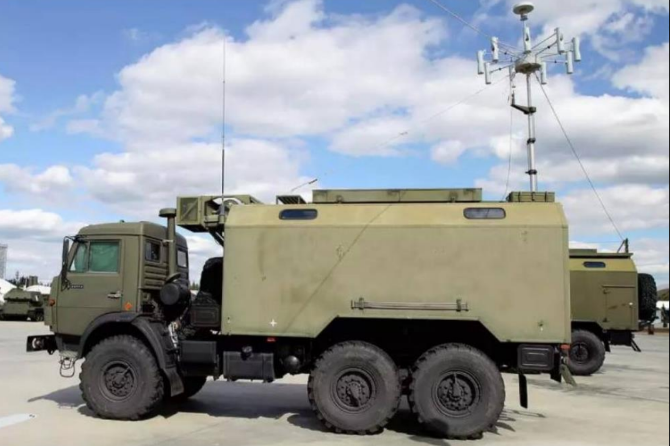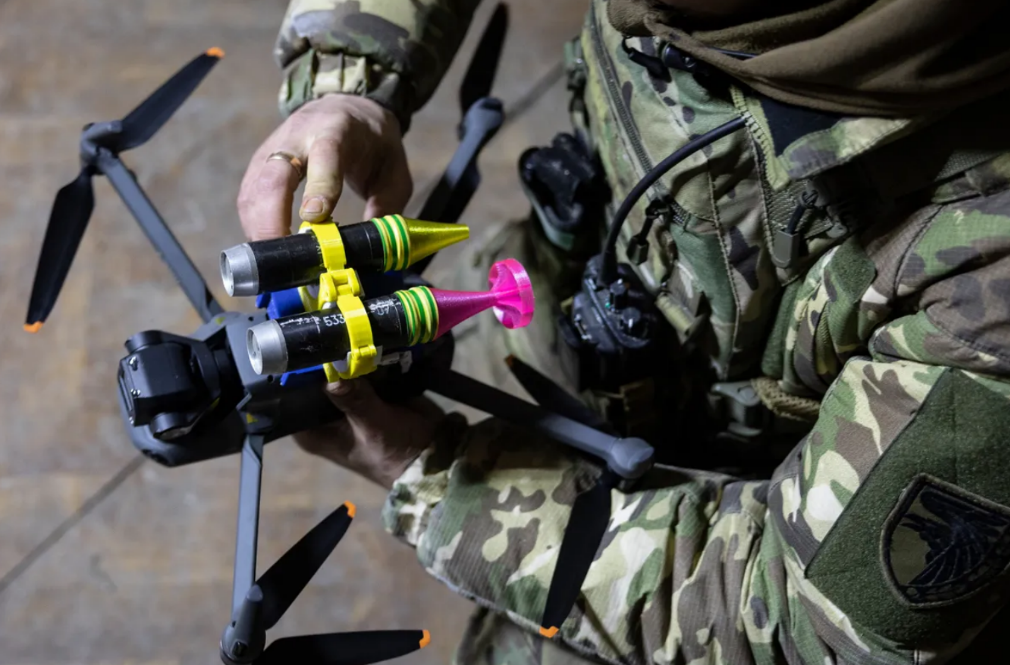Russian Adversarial Electronic Warfare and Analytic Response
Immediately following Russia’s failed blitz invasion into Ukraine in early February 2022, Medium-Altitude Long Endurance (MALE) drones used by Ukraine gained notoriety in the press for successful exploits against Russian armor and heavy equipment. In contrast, the relatively slow-moving months following the onset of the war presented a prime opportunity for Russia to deploy its vast electronic warfare (EW) network.
Originally designed for conflict against adversaries with significant advantages in manpower and traditional weaponry, Russian EW is both modular and highly layered. Each module forms a part of a larger jamming complex or system and remains capable of standalone operation. Specialized EW systems service a variety of frequencies across the radio spectrum. Similar to a tree trunk with branches, Russian central command units behind front lines control mobile jamming stations.

Figure 1. R-340RP “Pole-21” GPS/drone jammer deployed on mobile platform.
Because of the breadth and depth of the Russian EW network, many of the advantages Ukraine enjoyed in the war’s opening months disappeared, and the performance of MALE drones suffered.
The larger footprint and higher operating altitude of MALEs relative to smaller, commercial off-the-shelf (COTS) drones resulted in higher interception rates from both EW and air defense systems. Though COTS drones are also susceptible to Russian EW, their lower cost, greater mobility, and relatively widespread availability remain attractive for reconnaissance and one-way attack (OWA) purposes.

Figure 2. DJI Mavic 3 drone with improvised grenades attached.
3GIMBALS OMEN™ offers unparalleled insights into Russian EW at the unclassified level. Through open-source- research, OMEN identified operating frequencies, field deployment structures, and potential vulnerabilities of 35 unique Russian electronic warfare systems. These observations and insights offer superior battlefield-tactical awareness of adversaries’ tactics, techniques, and procedures. These findings illuminate adversarial EW philosophy and aid allies, policymakers, and diplomats in developing a comprehensive strategic response.


